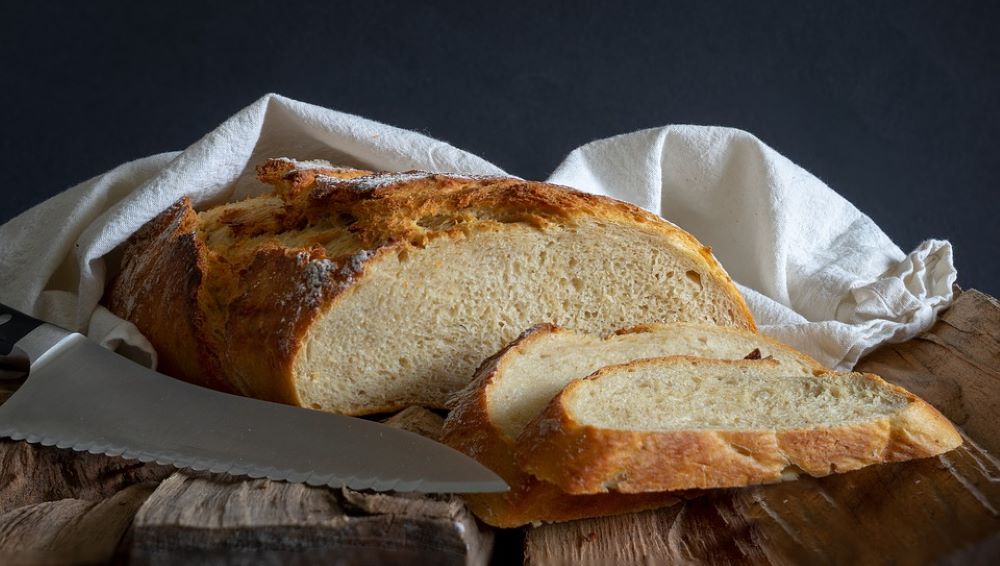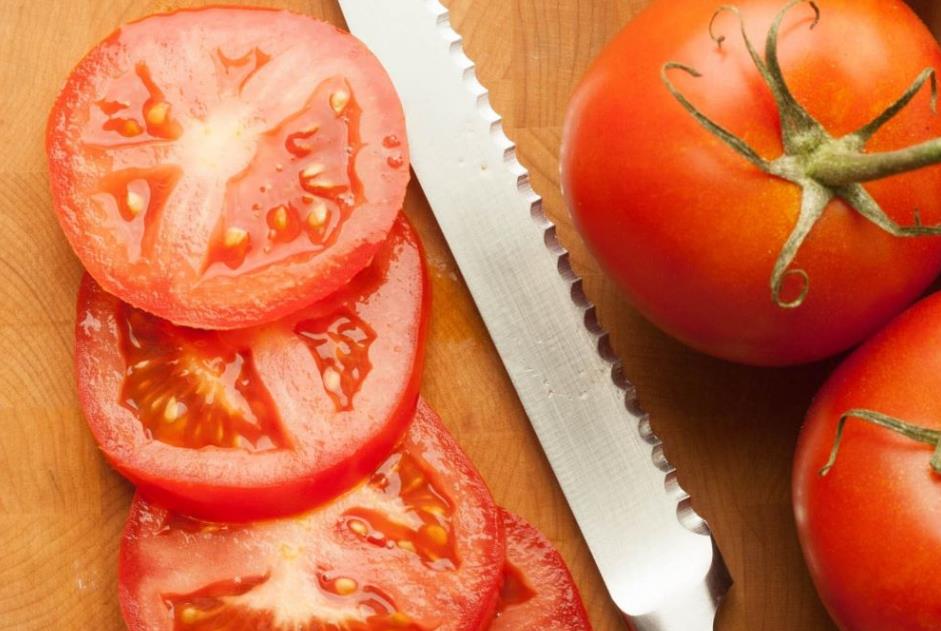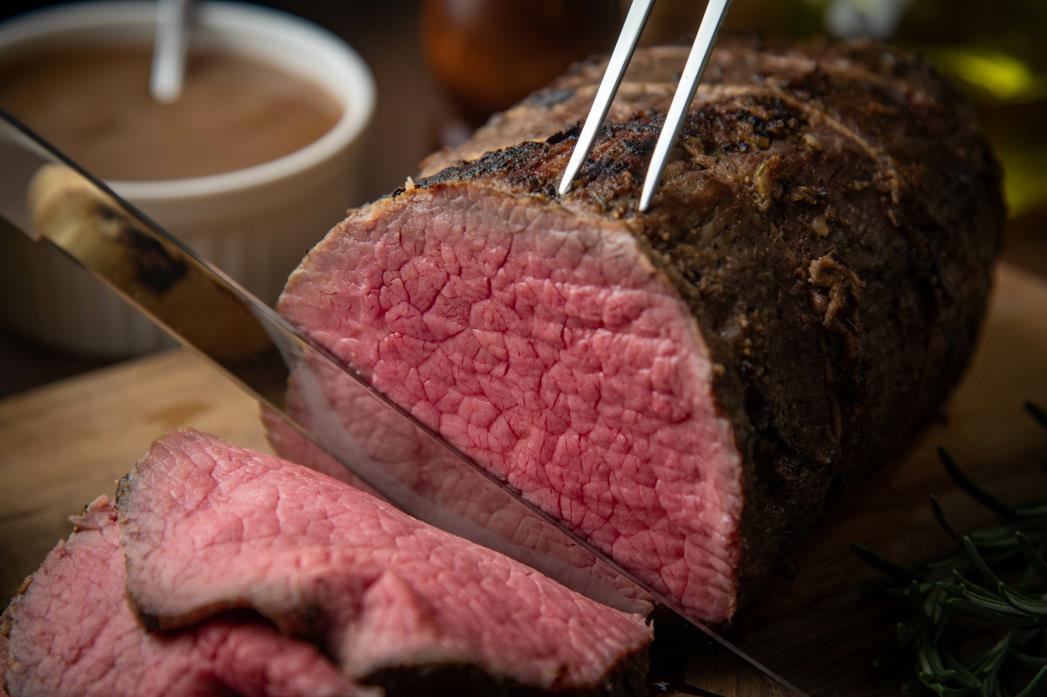You’ve just realized that the culinary world is your true calling. In this new-found love, you begin your journey with the basics: knives. You know that there’s a utility knife and a chef knife.
Meat cuts fine with those two but wait, what’s that knife with the cool saw-like serrations? You bet it would cut up meat even better. What you are looking at is a serrated bread knife. Your next question is probably this: can you use a bread knife to cut meat? The answer is no.
Do not use a bread knife to cut meat. Bread knives have saw-like serrations along their cutting edge designed to cut through food with firm exteriors and chewy, soft interiors. If you use a bread knife to cut meat, it will dull your bread knife and result in poorly cut pieces of meat.
Table of contents
So what is a bread knife?

A bread knife is typically a long knife, 8 to 10 inches in length, having saw-like teeth or scallops called serrations along its cutting edge. The serrated edge of a bread knife helps cut down food with hard exteriors and soft interiors such as bread in a saw-like motion, back and forth.
If you happen to cut bread or a tomato with a non-serrated knife, you will notice that the bread crumbles, and the tomatoes tend to make a mess. This is where the serrated edge of a bread knife comes in.
The specialty knife makes sure that its serrations grip the crusts and crumbs of the bread without pressing down on the bread itself. Therefore, there is little mess.
Serrated blade features
The serrated edge on a bread knife has pointed tips or teeth with hollows called gullets. Some bread knives have sharper teeth, while others have more rounded ones. Gullets also tend to be greater or lesser in size.
If your bread knife has sharper serrations, it will help you cut into hard surfaces better. However, they are likely to produce more crumbs. Serrated knives with rounded teeth demand more pressure but make a lesser mess.
Moreover, gullets determine the friction between the bread knife and the food. If your bread knife has fewer teeth, the size of the gullet will be more significant. Larger gullets allow for lesser friction and smoother cuts.
How to use a bread knife?
It’s relatively simple to use a bread knife. Simply place the food on a cutting board and draw the bread knife in back and forth motions like you work a saw. Don’t press down as the serrations will help cut through the food.
What happens when you use a bread knife to cut meat?
Do not use a bread knife to cut meat. If you didn’t know any better and have managed to commit this culinary offense, all you need to do is kiss goodbye to the sharpness of your bread knife. By now, your bread knife must have gotten dull, and sharpening it is quite the task. Also, what are you going to do with that poorly cut meat?
How to sharpen a serrated blade

You’ve managed to dull your bread knife by cutting meat, yet you refuse to give up on it. In such a case, your best bet is a ceramic honing rod. A honing rod will sharpen your bread knife by re-aligning its teeth back to their original forms. Here is how you can sharpen a serrated blade:
- Before we begin, make sure that your honing rod is the right size. You can do this by checking the size of your knife’s serrations and making sure it fits the honing rod.
- Position the honing rod in your dominant hand at an angle between 13 and 17 degrees for optimal results.
- Hold the knife in your non-dominant hand. The serrated edge must be facing towards you.
- Gently pass the honing steel through each serration, one at a time.
- Stroke each serration four or five times.
When you feel a burr pushing towards the non-angle side of the blade, your serrations will feel subtly raised. This means that you have successfully sharpened your bread knife.
What can you cut with a bread knife besides bread?
You don’t have to be a genius to guess that a bread knife is meant for cutting bread. However, you wonder if that is it? Do you need to buy a bread knife just for cutting bread? Don’t fret. You may use your bread knife for pretty much anything that has a soft interior but looks tough on the outside, such as:

- Tomatoes
- Lemons
- Lime
- Cakes and pastries
- Cantaloupe
- Pineapple
We know. People hardly bake fresh bread these days. Even then, buying a bread knife is worth it as they help cut several other food items such as cakes and pastries. It’s best if you add them to your kitchen arsenal.
What knife should you use to cut meat?
It’s decided. You are never going to use a bread knife for cutting meat. Ever. Which knife works best for cutting meat anyway? Here are a few:
Utility knives
Utility knives are kitchen all-rounders similar to a chef knife but smaller. They are medium-sized knives, typically 4 to 7 inches long which can handle a wide array of ingredients such as meat. Cooked meat or raw meat can be tackled with a utility knife, provided it’s not too dense. Other than that, they cannot handle bones.
Best knives to cut meat
True cutting power in the palm of your hand
Slicing knives
Slicing knives are characterized by long, thin blades that typically have a pointed tip or a curved one. They can cut thin slices of meat such as chicken, fish, pork, and beef. However, they are not suitable for dense meat or bones.
Carving knives
These knives typically feature a long blade between 8 and 15 inches and allow you to work around bones. They produce thin, clean, and uniform cuts each time.
As evident by the name, carving knives are best for carving large roast and meat dishes such as prime rib, chicken, and turkey.
Boning knife
Boning knives are also a type of kitchen knife with sharp tips and narrow blades. These features make them perfect for boning meat, poultry, pork, and fish.
Steak knife

Steak knives are perfect, sharp knives ideal for cutting food such as steak, chicken strips, and chops. These knives can be serrated or non-serrated.
Chef’s knife
A chef knife is an everyday kitchen staple capable of cutting everything from fruits and vegetables to meat. The chef knife is usually 8 to 10 inches long and features a sloping curve and a sharp edge.
A quality chef knife will allow you to work with meat in more ways than one. You can carve meat, separate it from bone, and cut the meat as well if it’s not too dense. The chef knife, however, cannot handle bones.
Cleavers
Cleavers are the ultimate meat splitters in a chef’s arsenal! These bulky giants can handle all sorts of meat, cartilage, and bone, all thanks to their thick, tough metal. These giants resemble a square or rectangular-shaped hatchet, and their flat side is useful for pounding and tenderizing meat.
Butcher knife
Similar to a cleaver, butcher knives are extremely sharp and thick with a Granton edge. Primarily, these knives are used for butchering the animal carcass. These knives are also great for cutting and slicing through skin, fat, and even bone.
FAQs
How to care for a bread knife?
Hand-wash your bread knife with warm water and soap immediately after each use. Dry it with a soft cloth before putting it away.
Can I use a serrated knife for cutting meat?
A serrated knife can be used for carving roasts. This is because the serrations slice through the skin and help to provide long, even cuts. Larger meat and other types of meat, however, require other knives.
Is a serrated utility knife the same as a bread knife?
A bread knife is a longer version of a serrated utility knife. Bread knives feature serrations that are better apt at cleanly slicing through food with hard exteriors and chewy interiors.
In conclusion
While all these knives may have gotten your head spinning, they have had their roots in thousands of years of trial and error. Each knife serves a specific purpose. Therefore, it’s best to use them for what they do best.












